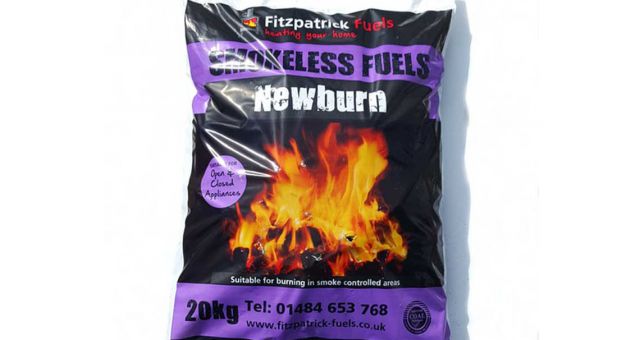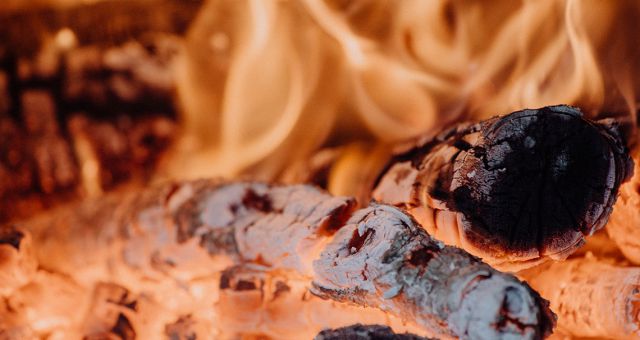A regular question we see within the firewood sales community is “what is the difference between seasoned firewood and kiln-dried firewood.”
Seasoned
Seasoned firewood is made from ‘green’ wood, this is wood that has been freshly cut. It then is air dried by being left outside. The logs are split, stacked and stored under a cover. The wood is stacked in a specific way to allow the most amount of air as possible to pass through.
Pros –
Lower Cost – The production process of Seasoned wood is significantly cheaper than Kiln Dried therefore, the price to buy the wood tends to be cheaper too.
Potential for High Quality – If the wood has been dried properly for the most amount of time possible then the wood can burn almost as good as its Kiln Dried alternative.
DIY – For DIY fanatics that enjoy doing things for themselves and love having projects to do. You could buy, split and season your wood yourself. It does take some work, time and effort but if you are willing to give it go then it’s possible to do. This can also save you some more money.
Cons –
Time – It takes time for wood to season. Softwood on average takes a minimum of 6 months to reach full season. Most hardwoods take anywhere from 18 – 24 months to reach full season. This can also be affected by variables such as the weather, storage position and facilities. Therefore, if you are going to season it yourself, be prepared to have to wait up to 2 winters before you can burn it.
Moisture Levels – Consistency in the moisture content of seasoned logs is not regulated in the same way that it is in Kiln Dried wood. The moisture content generally doesn’t get as low as a Kiln Dried log, on average the lowest moisture content seen in Seasoned wood is around 25%. but, as mentioned above this isn’t consistent. Within your store you could have one log that burns really well as it is well dried, this can then be followed up by another log that is still water filled. This log would be hard to light, very sooty & produce high levels of smoke.
Space – Drying out Seasoned wood requires a lot of storage space. The logs need to be stored properly to allow an ample amount of air flow to get between the logs in order for them to dry out. This can take up a lot more space than it would take to store Kiln Dried logs that are already dried out.
Animals and Critters – The environment created by having the logs stacked up is the perfect home for bugs and small animals. They are attracted to the dark, semi-damp environment the log stack provides. They then might make their way into your home if they are good at hiding in the stack you carry inside.
Spitting – The heat from the fire causes the water to boil and then evaporate. The vapour then causes outward pressure on the log. Eventually the wood gives way and splits. Small bits then may fly off which can lead to damage on your carpet or surrounding area if the door on your stove is open or if you are using an open fire. The snapping/Cracking noise that can be heard is the wood splitting apart and allowing moisture to release.
Mould – If one log in the store happens to be mouldy, then it could release spores. These spores can then affect the whole store. If you then brought them inside to store next to the fireplace without realising, you could then have to deal with mould in the home as more spores release, especially after movement.
Kiln Dried
Kiln Dried wood is made by cutting the tree, taking the ‘green’ wood and splitting it, it then gets placed into an industrial kiln. The kiln effectively looks like a giant oven, the logs are loaded into metal grates and placed into the kiln. The complex procedure then begins by using varying levels of air flow to draw the moisture out of the wood. The process is carried out over a series of days depending on the moisture levels, the weather and the density of wood. Typically this is anywhere between 3 – 7 days. The process can also remove infestations of fungi and insects.
Pros
Burning Qualities – Due to their low moisture content the logs you get from Kiln Dried wood is easier to light, produces very little smoke, significantly lower levels of creosote & burns hotter than wetter wood.
Consistency – Moisture levels are closely monitored and easier to control during the Kiln Dried process. All logs leave the kiln with a moisture content of less than 20%. If the wood is pulled out of the kiln and the moisture levels are not low enough then they can be put back in.
Ready to Burn – With the implementation of the Ready to Burn Scheme by DEFRA all wood sold has to be under 20% moisture. This means less Seasoned wood will be available on the market. All of our Kiln Dried wood is compliant with the Ready to Burn Scheme and is ready to go straight on your fire as soon as you recieve it.
Year Round Production – Unlike Seasoned wood, Kiln Dried wood can be produced year round. This means companies are able to keep up production instead of slowing down during the winter months. This is because the kilns can be used no matter how cold or wet it is, the only effect the weather can have on the kiln is that the wood may need an extra day in the kiln compared to in hotter weather. Whereas, the weather can have serious impacts on Seasoned wood in that during the wetter month the drying process can slow down and take longer.
Cons
Cost – Due to the production process being more complex than the Seasoned wood process, you will find the price of the wood is a bit more expensive. However, you are purchasing a finished product when buying Kiln Dried wood which is instantly ready so the cost may be worth it instead of having to wait for the Seasoned process to be complete.




